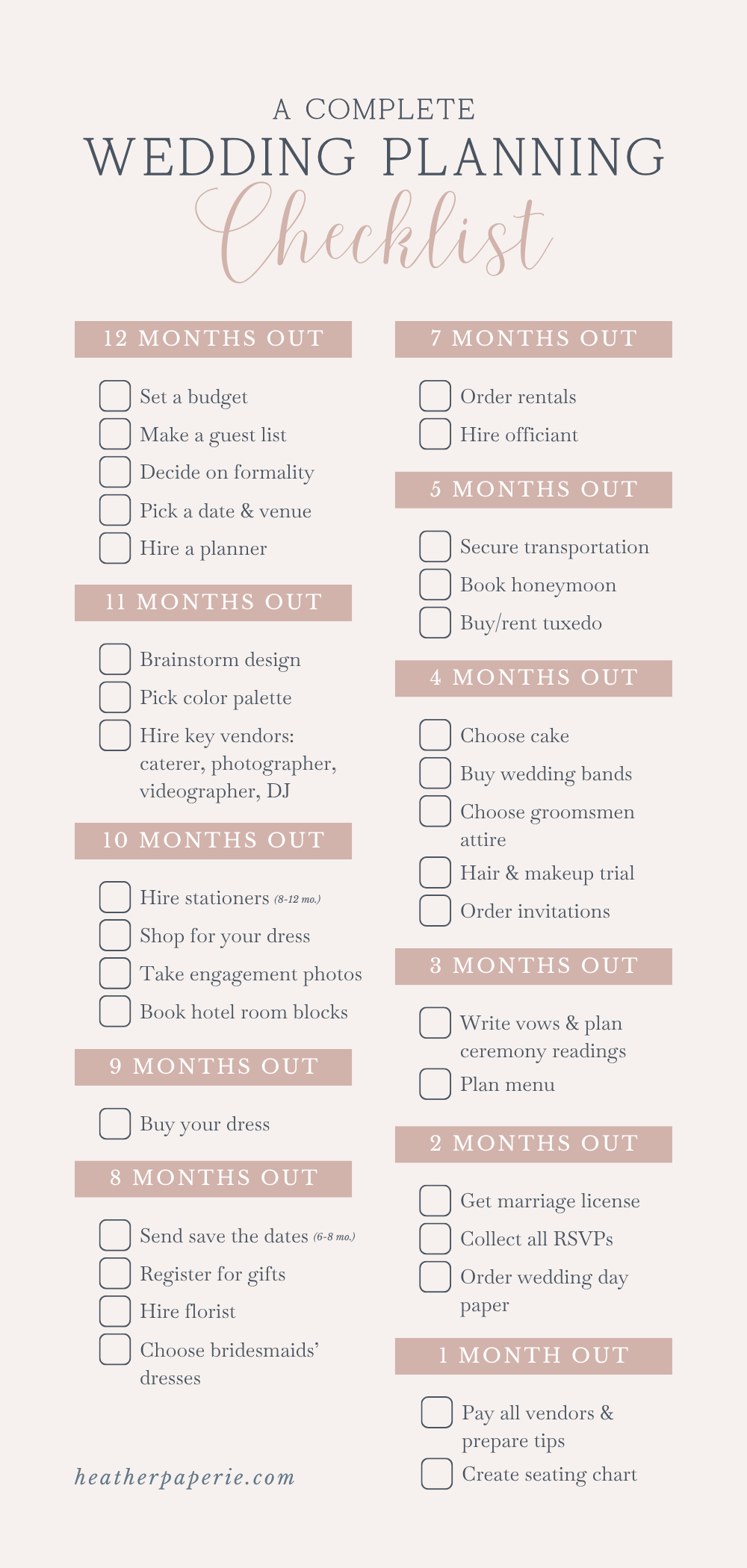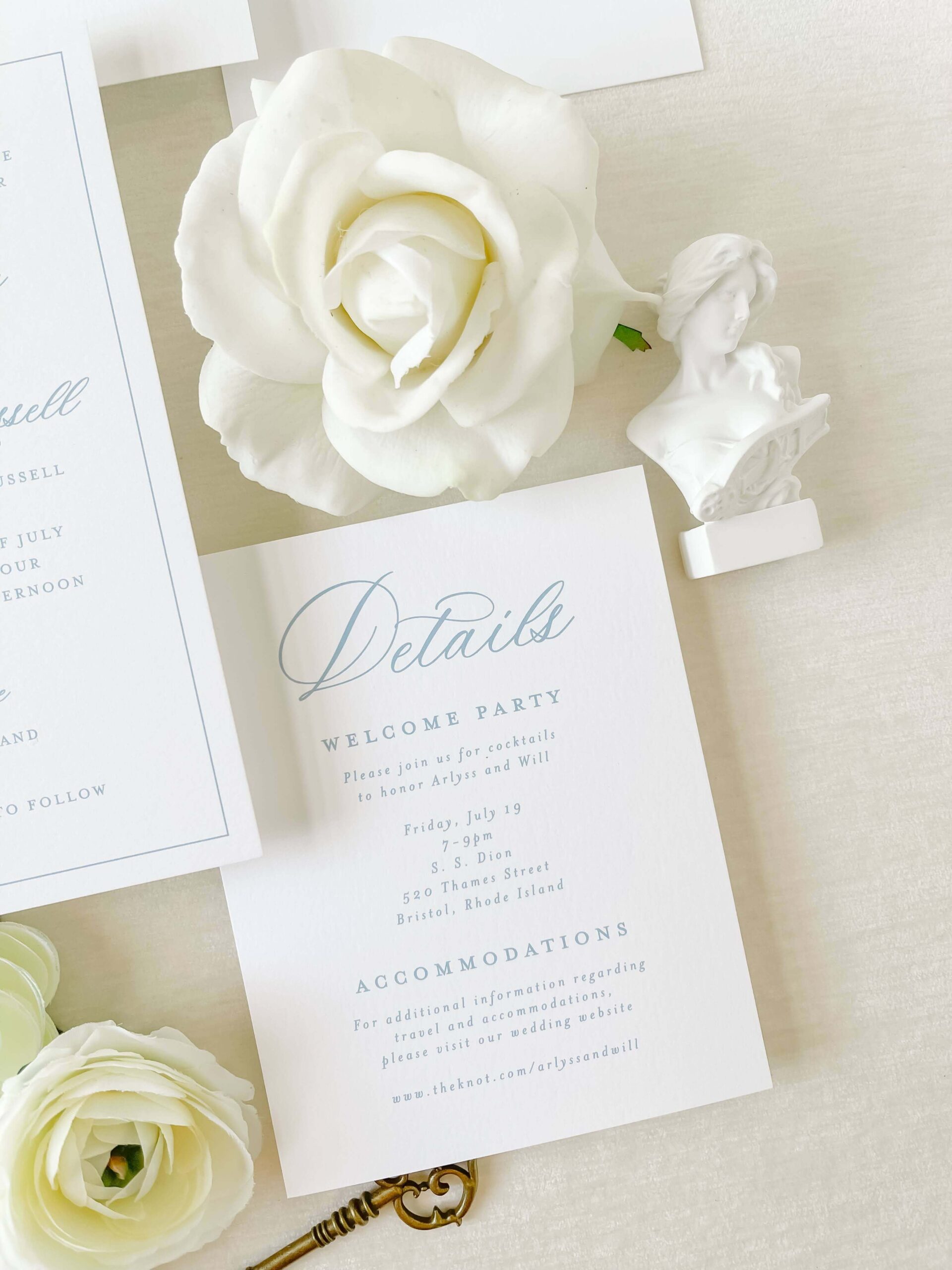Emily Ziegler • September 13, 2024
Share it:
Planning a wedding is an exciting journey, but it can also feel overwhelming. When I was planning my own wedding, I had this grand vision of everything falling perfectly into place. However, reality quickly set in, and I realized how many moving parts there were! From juggling vendor meetings to making sure my partner and I were on the same page about guest lists and budgets, it was easy to feel like I was in over my head. That’s why having a clear roadmap made all the difference. In this post, we’ll walk you through how to plan a wedding step by step, so you can focus on enjoying this special time and creating your dream day.
Planning a wedding? Pin this image so you don’t miss a single step!

1. Set a Budget (12+ Months Before)
Before you start planning your wedding, it’s crucial to establish your budget. This will be the foundation for all your future decisions. Take some time with your partner to talk about how much you can afford to spend. Also, consider if family members will be contributing financially. It’s important to have these discussions early on to ensure everyone is in agreement.
Break your budget into key categories, such as venue, catering, entertainment, and decor. It’s also important to prioritize what matters most to you. For example, if you dream of having a luxury venue, you may decide to scale back on other areas like flowers or transportation.

2. Plan Your Guest List (12+ Months Before)
Your guest list is one of the first major steps in planning your wedding. Start by listing immediate family and close friends, then expand to extended family, colleagues, and acquaintances. Be sure to discuss whether you’ll allow plus-ones or children at the event, as this will affect your final guest count.
A clear guest list not only helps determine the size of your venue but also impacts your budget and overall planning. Use a shared spreadsheet to keep track of names, addresses, and RSVPs later on.
Check out How to Make a Wedding Guest List for a step-by-step guide to creating your dream list.
3. Choose a Wedding Date and Venue (11-12 Months Before)
Once your budget and guest list are sorted, it’s time to select your wedding date and venue. Your venue and date will set the tone for your entire wedding. Tour potential locations as early as possible, especially if you’re getting married in peak season (May–October).
If you have a specific date in mind, start by checking venue availability. However, if you’re flexible with your date, you may find more options for your perfect location. The venue will also guide your theme and decor choices, so take time to visit different places to find the one that fits your vision.
Getting married on the East Coast? Here are a few of our favorite East Coast wedding venues!
4. Hire a Wedding Planner (Optional, 11–12 Months Before)
If you feel overwhelmed by the logistics of wedding planning, hiring a wedding planner can make a world of difference. A planner can help with everything from vendor recommendations to managing day-of details. If you’re struggling to find a venue that fits your needs, a planner can help with that as well. Opt for full-service planning, day-of coordination, or anything in between based on your needs.
We chatted with two wedding planners to learn more about their unique perspective and serve our couples. Check out our conversations with Spring Lane Event Planning (PA) and Weddings by Lisa Yarbro (TX).
5. Book Core Vendors (9-11 Months Before)
As you continue to learn how to plan a wedding, one of the most important steps is securing your key vendors.
Your core vendors:
- Photographer & videographer
- Caterer
- Florist
- DJ or band
- Stationery designer (especially for custom work)
These vendors will play a crucial role in bringing your wedding vision to life, so it’s important to book them early. Once you’ve locked in your major vendors, you can move on to other details like hair and makeup, transportation, and decor rentals.
6. Plan Your Wedding Stationery (8-10 Months Before)
Wedding stationery plays a pivotal role in setting the tone for your big day and communicating essential details to your guests. From the moment they receive your save the dates to the thank you cards sent after the celebration, every piece of wedding stationery contributes to the overall experience and excitement surrounding your wedding. Your save the dates or wedding invitations are your guests’ first glimpse into your wedding day. So why not wow them?
Here is a general timeline that you can follow for your stationery:
| Stationery | When to Order | When to Send |
|---|---|---|
| Save the Dates | 8-10 months before | 6-8 months before |
| Invitations | 6-7 months before | 4 months before |
| Wedding Day Paper | 2-3 months before | Week of wedding |
Check out our detailed wedding invitation timeline for information on when to order each piece of paper you may need for your big day.
Interested in stationery but not sure what you need to know? We’ve made a guide of important questions to ask your wedding stationer!

7. Choose a Theme, Style, or Color Palette (8–9 Months Before)
Choosing a theme or style is a fun part of the wedding planning process! This is where you get to bring your personal vision to life. Whether you’re going for classic elegance, modern minimalism, or a bohemian vibe, your theme will guide everything from your decor to your attire. If you’re struggling to choose your wedding color palette, your stationery designers can help!
Need a starting point? We’ve rounded up some beautiful weddings we’ve participated in:
- Enchanting Lilac Theme Wedding
- French Blue Countryside Wedding
- East Coast Wedding with a Pop of Orange
- Coastal Blues Wedding
- Peach Summer Garden Wedding
8. Shop for Attire (8–10 Months Before)
Wedding dresses, suits, and alterations take time. Start dress shopping about 10 months before your wedding and aim to have your gown ordered no later than 8 months out. Don’t forget accessories and shoes, too. When you go to your fitting(s), you’ll want to wear your wedding shoes for accurate alterations.
For bridesmaids and groomsmen, allow at least 5–6 months for orders and fittings.
9. Arrange Transportation and Accommodations (6–8 Months Before)
For guests traveling from out of town, it’s important to organize accommodations and transportation. Block rooms at local hotels and provide clear instructions on how to get to and from your venue. If your venue is far from lodging, consider arranging shuttle services to make it easier for your guests to arrive on time. Including this information on a details card in your wedding invitation suite is an excellent way to keep your guests informed.

10. Plan the Ceremony and Reception Details (3–6 Months Before)
Next, it’s time to plan the details of your ceremony and reception. This includes selecting music, ceremony readings, and creating a detailed timeline for the day. Work with your vendors to ensure that everything flows smoothly from your grand entrance to your first dance and the cake cutting. Many of your core vendors will help you stay organized throughout this process by sending questionnaires and scheduling meetings to finalize details.
Note: This is also a good time to start designing your day-of stationery: programs, menus, seating charts, and signage.
11. Finalize Details (1–2 Months Before)
About two to three weeks before the wedding, confirm all the details with your vendors. Ensuring everything is in place will help you feel more relaxed as your big day approaches.
Focus on these five essentials:
- Confirm Vendors and Timelines – Double-check all contracts, arrival times, and responsibilities with your vendors. Make sure everyone has the final wedding day timeline.
- Send Final Guest Count – Share your RSVP numbers with your venue and caterer so they can prepare the right amount of food, seating, and staff.
- Finalize Your Seating Chart and Day-Of Stationery – Make sure your seating chart, place cards, and menus are finalized and sent to your stationery designer.
- Schedule Final Dress Fittings and Beauty Appointments – Confirm your final alterations, beauty schedule, and hair and makeup timeline to avoid last-minute stress.
- Plan Day-Of Logistics – Assign someone to handle setup items, décor, and cleanup, and confirm transportation or shuttle schedules for guests and the wedding party.
12. Enjoy Your Day!
You’ve planned, prepared, and checked every detail, so now it’s time to relax and be fully present. Trust your vendors, soak in each moment, and focus on celebrating with the people you love most. Your wedding day will go by quickly, but the memories and photos will last a lifetime.

As you navigate how to plan a wedding, remember that your wedding stationery plays a vital role in setting the tone for your event and conveying important information. At Heather Paperie, we make sure your stationery is not only beautiful but also delivered on time, so your planning process remains seamless. Ready to start crafting the perfect stationery for your big day? Contact us today and let’s make your wedding day unforgettable!






Leave me a note!